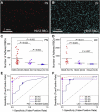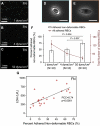Sickle cell disease biochip: a functional red blood cell adhesion assay for monitoring sickle cell disease
- PMID: 27063958
- PMCID: PMC4959913
- DOI: 10.1016/j.trsl.2016.03.008
Sickle cell disease biochip: a functional red blood cell adhesion assay for monitoring sickle cell disease
Abstract
Sickle cell disease (SCD) afflicts millions of people worldwide and is associated with considerable morbidity and mortality. Chronic and acute vaso-occlusion are the clinical hallmarks of SCD and can result in pain crisis, widespread organ damage, and early movtality. Even though the molecular underpinnings of SCD were identified more than 60 years ago, there are no molecular or biophysical markers of disease severity that are feasibly measured in the clinic. Abnormal cellular adhesion to vascular endothelium is at the root of vaso-occlusion. However, cellular adhesion is not currently evaluated clinically. Here, we present a clinically applicable microfluidic device (SCD biochip) that allows serial quantitative evaluation of red blood cell (RBC) adhesion to endothelium-associated protein-immobilized microchannels, in a closed and preprocessing-free system. With the SCD biochip, we have analyzed blood samples from more than 100 subjects and have shown associations between the measured RBC adhesion to endothelium-associated proteins (fibronectin and laminin) and individual RBC characteristics, including hemoglobin content, fetal hemoglobin concentration, plasma lactate dehydrogenase level, and reticulocyte count. The SCD biochip is a functional adhesion assay, reflecting quantitative evaluation of RBC adhesion, which could be used at baseline, during crises, relative to various long-term complications, and before and after therapeutic interventions.
Copyright © 2016 Elsevier Inc. All rights reserved.
Figures






References
-
- Sprague RS, Stephenson AH, Ellsworth ML. Red not dead: signaling in and from erythrocytes. Trends Endocrinol Metab. 2007;18:350–5. - PubMed
-
- Skalak R, Branemar PI. Deformation of red blood cells in capillaries. Science. 1969;164:717–9. - PubMed
-
- Canham PB, Burton AC. Distribution of size and shape in populations of normal human red cells. Circ Res. 1968;22:405–22. - PubMed
Publication types
MeSH terms
Substances
Grants and funding
LinkOut - more resources
Full Text Sources
Other Literature Sources
Medical

